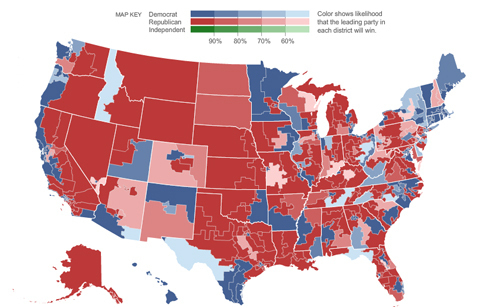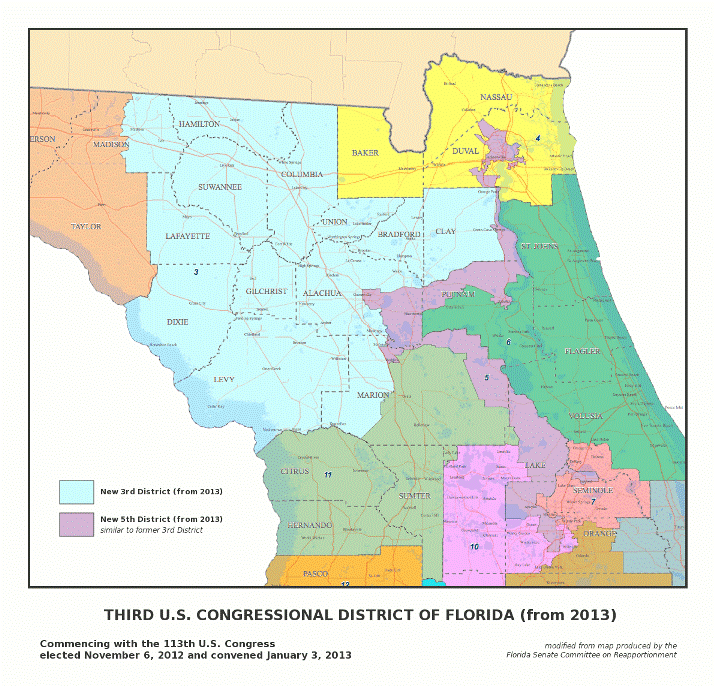
 | The Xenophile Historian |
THE HOLY BOOK OF UNIVERSAL TRUTHS,
K. U. P.
(Kimball's Unauthorized Perversion)
| File CONGRESS.SYS corrupted: Re-boot Washington D.C (Y/N)?
|
I have long felt that it is not good for our system of government to have it run by a group of entrenched career politicians. You have to wonder what a person gives up to be elected repeatedly; for that reason I have said, "Anyone who has been in public office longer than I have been alive can't be all good." Fortunately, I have gotten old enough that I don't see any cases like that now, but my sentiments are still along the lines of "When in doubt, vote them out."
In Congress we now have a situation where membership changes less often than it did in the bad old days of the Soviet Politburo. Both major parties feel an obligation to enter a candidate in every race for the U.S. Senate, but in House races the deck is so stacked in favor of the incumbent that he routinely wins 70 percent or more of the vote, and often nobody will run against him. These aren't really free elections, even if we like the current office holder.
The situation got so bad in the late 1980s-early 1990s that there was a general revulsion against incumbents in the 1994 election; 10 percent of Congress was voted out of office, and another 10 percent chose not to run again. From a political standpoint, that had to be the happiest day of my life, but oh, how quickly the routine came back! Most of those "retired" were Democrats, and Republicans like Newt Gingrich talked about some sort of term limitation, like a maximum of twelve years in office. However, once Newt and his friends were in power, the term limitation talk stopped. And the congressmen went back to being "two-year locusts," as the late cartoonist Jeff MacNelly once called them. By 1998, 98 percent of those running for re-election kept their jobs, and it has been that way since. The only incumbents who don't remain on the take job are those who retire and those who become a national embarrassment, like Georgia's Cynthia McKinney.

I don't know how many years would be the ideal amount for a term limit in the House and/or Senate, but it's time we started talking about it again. We could, for example, require that congressmen serve nonconsecutive terms, meaning that when a term runs out, they would have to wait one or more terms before running for the same office again. The Romans did the same thing with their consuls, and it would make political careers impossible.
At the same time, we also ought to look at the problem of gerrymandered districts, which is part of the reason why incumbents are so rarely turned out. When congressional districts are defined in a way to ensure that a certain kind of politician holds them, when lawmakers pick the voters instead of voters picking the lawmakers, the result is bad all around. In Florida, for example, the 5th Congressional District (called the 3rd District before 2013) was drawn to guarantee that the representative from that district will be a black Democrat. It makes little sense from a geographical perspective; the district includes the west side of Orlando and the center of Jacksonville, two cities 140 miles apart that don't have much in common, but it does not include the other neighborhoods of both cities. Between those cities it snakes across the state, never more than twenty miles wide anywhere (the purple zone in the map below).

Thanks to computer-drawn districts, today's gerrymandering has gone from being the subject of cartoons, as the original Gerry-mander was in 1812, to a "corruptly exact science," as The Washington Post put it. In an August 2004 column, The Boston Globe's Jeff Jacoby explained why it is a problem to have invulnerable congressmen in illogical-looking districts:
"As elections become increasingly meaningless, fewer citizens bother to vote. As incumbency becomes a permanent entitlement, fewer challengers bother to run. With no fear of losing, lawmakers become more arrogant and imperious, less open to compromise. Why moderate your stance or reach out to the center when there is no penalty to pay for digging in your heels and taking a hard line? It isn't negative advertising or special-interest money that makes Congress so polarized and dysfunctional. It is the disappearance of competitive elections thanks to hyperpartisan redistricting."
Fortunately, there is an obvious answer to gerrymandering: don't let the politicians draw the districts. In Iowa, for example, an independent commission, the Legislative Service Bureau, does this job, by ignoring party registration in each community and following these rules: make sure that the districts are equal in population, that they don't divide towns or counties, and are compact and not divided into more than one piece. As a result, Iowa is less predictable than most states in every election, and probably more moderate, too, since it can go either way. Let's hope this catches on in other states.
Now that we're done with congressmen, shall we consider a shorter term for the president, too? Once the festivities of Inauguration Day are done, you know the president is thinking about what he has to do to get re-elected, and the day after he wins a second term, he's a "lame duck," for crying out loud! I know this would take a constitutional amendment at least, but instead of giving our popular presidents two four-year terms, and our unpopular presidents one, how about a single six-year term for everybody, like they have in Mexico and the Philippines? Regardless of which party they're from, wouldn't they get more done, and act more like real leaders, if they weren't planning to campaign again in a few years, and checking to see whether public opinion was on their side?
Apparently presidents age more quickly while they're in the White House. Of the nineteen presidents who have served two terms in office, only two enjoyed a second term that was as good as the first. Those two were Theodore Roosevelt and Calvin Coolidge, and both were special cases. Roosevelt had plenty of vigor, being the youngest president in U.S. history. Coolidge's first term only lasted a year and a half, because he filled in for a predecessor who died in office, Warren G. Harding; what's more, Coolidge had a reputation for saying and doing almost nothing. Here is the track record of the rest.
Finally, it's time to consider a constitutional amendment limiting the time judges sit on the United States Supreme Court. It seemed like a good idea when the Constitution was written, to let judges sit on the bench for life so they could make decisions without worrying about the current political climate, but that was when life expectancy was only a little more than half of what it is now. Keep in mind that the authors of the American Revolution were young men. In 1776, most of them were in their thirties and forties; Benjamin Franklin was about the only elder statesman in the bunch. If folks like Washington and Jefferson look old to us, it is because most of the portraits we have of them were painted much later, toward the end of their careers. Consequently, the average Supreme Court justice in the early days of America served less than eight years, about the same amount of time as a typical member of Congress. Nowadays the average tenure on the court is 25 years; the longest-reigning justice, William O. Douglas, lasted for 36 years (1939-75).
You can thank modern medicine for this increase in tenure. The constitution allows for impeachment of justices who have committed a serious crime, but there is no way to remove one who can't do the job. Consequently we have had justices stay on when they were obviously falling apart, addicted to painkilling drugs, or even insane. Douglas, for example, remained on the bench for nearly a year after being incapacitated by a stroke, and the other justices secretly agreed that any court decision would be invalid where Douglas cast the deciding vote. Others refuse to step down for political reasons; e.g., Thurgood Marshall stuck around until 1991, long after his health started failing, because he was determined not to let a Republican president choose his successor.
So what do you get when justices last as long as kings did before the twentieth century? You get a Supreme Court afflicted with physical and mental incompetence, a mindset so rigid that one's actions are absolutely predictable, a lack of accountability to the other branches of government, long periods exceeding a decade when no new justices are appointed, and ugly political battles every time a vacancy appears. In addition, older justices are less productive (the court rendered only 76 decisions in 2004, far less than it used to), and we have to remember that while a bad presidential or congressional decision can be overturned with the next election, it can take a generation to get over a bad Supreme Court ruling. In one case, the Dred Scott decision, it made the US Civil War inevitable.
One columnist suggested a single eighteen-year term for each justice, presumably so that a new one will be appointed every two years. I will suggest an alternative; during the Papal conclave that elected Pope Benedict XVI, I learned that cardinals over the age of 80 are not permitted to vote. Perhaps we should do something like that here, where a justice has to step down upon reaching his/her eightieth birthday, regardless of how long they served. However we do it, term limitation in all three branches of government is something we need to keep those on top from going stale.
"The tree of liberty must be refreshed from time to time with the blood of patriots and tyrants . . . Poured out on a black granite altar from a copper chalice, to the sound of pounding drums, as drug tranced maidens dance in naked frenzy under a dusky red lunar eclipse."--what Thomas Jefferson should have said.
Support this site!